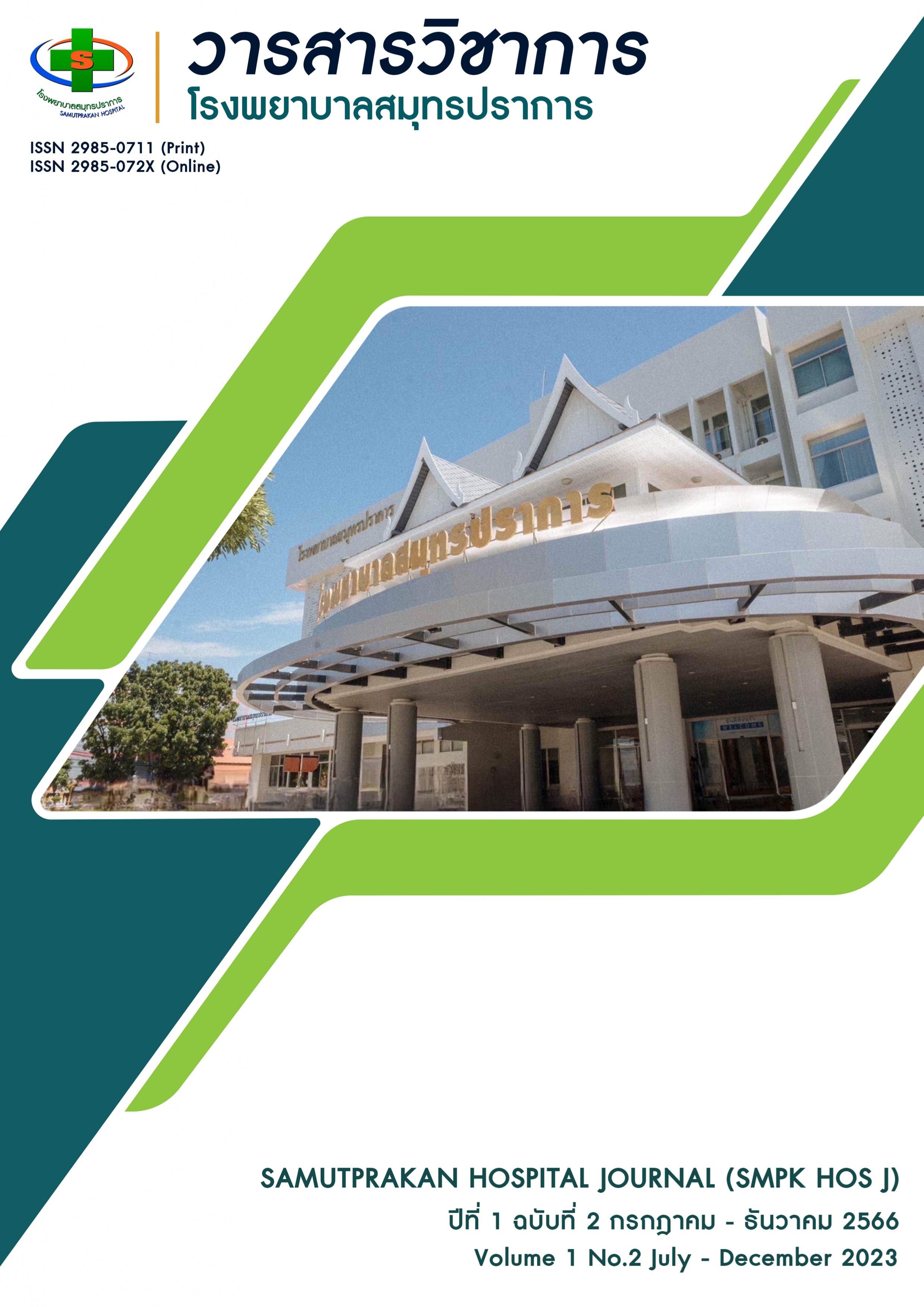Nursing Care for Patients with Dengue Shock Syndrome: A Case Study
Keywords:
Dengue hemorrhagic fever, Shock, Nursing careAbstract
The problem of dengue hemorrhagic fever is a major public health concern in Thailand. The disease is a mosquito-borne illness. The rate of infection is typically high in the rainy season. The mortality rate in 2023 is greater than in 2022. Dengue hemorrhagic fever affects individuals of all ages, with children aged 5-14 particularly at risk. The purposes of this study are to identify the progress of the disease and monitor significant changes in symptoms in the critical phase. This study featured a patient who experienced hypovolemic shock from plasma leakage, a complication that can be life-threatening. The patients can be aided in recovering from the critical phase by accurate and prompt application of the nursing process in assessment, diagnosis, nursing care plans, and nursing outcomes.
In this case study, the patient had been treated in the pediatric inpatient department of Bangplee Hospital. Dengue hemorrhagic fever was diagnosed by the physician. In the critical phase, the patient had hypovolemic shock, coagulopathy, electrolyte imbalance, and plasma leakage as indicated by the presence of pleural fluid. Because of the severity of the disease, the fatality rate increased. Thus, nurses have an important role in close observation of changing symptoms, prompt reporting to the doctor, stringent monitoring of intravenous fluid management, and providing information on medical treatment. These are extremely important and help patients and their families reduce their anxieties and collaborate with medical treatment until the patient fully recovers from the crisis. Holistic care should be provided including physical, psychological, emotional, and social dimensions.
References
กระทรวงสาธารณสุข. กรมควบคุมโรค. สถานการณ์โรคไข้เลือดออก. [อินเทอร์เน็ต]. 2566. [เข้าถึงเมื่อ 14 ตุลาคม2566 ]. เข้าถึงได้จาก: https://ddc.moph.go.th/brc/news.php?news=36533& deptcode=brc&news_views=3731
กรมควบคุมโรค. กองโรคติดต่อนำโดยแมลง.แนวทางการดำเนินงานเฝ้าระวัง ป้องกัน ควบคุมโรคติดต่อนำโดยยุงลายสำหรับเจ้าหน้าที่สาธารณสุข พ.ศ.2564 . กรุงเทพ: อักษรกราฟฟิคแอนด์ดีไซน์; 2564.
ศิริเพ็ญ กัลยาณรุจ, มุกดา หวังวีรวงศ์, วารุณี วัชรเสวี. การวินิจฉัยและรักษาโรคไข้เลือดออกเดงกี ฉบับเฉลิมพระเกียรติ 80 พรรษามหาราชินี. กรุงเทพ: องค์การสงเคราะห์ทหารผ่านศึก; 2556.
วีระชัย วัฒนวีรเดช, กุลกัญญา โชคไพบูลย์กิจ. Update on Pediatric Infection Diseases 2020. นนทบุรี: บียอนด์ เอ็นเทอร์ไพรซ์ จำกัด; 2563.
กรมควบคุมโรค. สำนักโรคติดต่อนำโดยแมลง. คู่มือวิชาการโรคติดเชื้อเดงกีและโรคไข้เลือดออกเดงกีด้านการแพทย์และสาธารณสุข.กรุงเทพ: อักษรกราฟฟิกแอนด์ดีไซน์; 2558.
คณะแพทย์ศาสตร์ศิริราชพยาบาล. ภาควิชากุมารเวชศาสตร์. แนวทางการวินิจฉัยและการดูแลรักษาโรคติดเชื้อไวรัสเดงกี. [อินเทอร์เน็ต]. 2566. [เข้าถึงเมื่อ 14 ตุลาคม2566]. เข้าถึงได้จาก https://www.si.mahidol.ac.th>infectiousdiseashttps://www.si.mahidol.ac.th/th/department/pediatrics/pdf.
กระทรวงสาธารณสุข. กรมการแพทย์. แนวทางการวินิจฉัย ดูแลรักษาผู้ป่วยไข้เลือดออก (ฉบับย่อ) พ.ศ.2566. นนทบุรี: บียอนด์ เอ็นเทอร์ไพรซ์ จำกัด; 2566.
สมาคมโรคติดเชื้อในเด็กแห่งประเทศไทย. ความรู้สำหรับประชาชน โรคไข้เลือดออก. [อินเทอร์เน็ต]. 2566. [เข้าถึงเมื่อ 14 ตุลาคม 2566]. เข้าถึงได้จากhttps://www.pidst.or.th/A713.html
Downloads
Published
How to Cite
Issue
Section
License
Copyright (c) 2023 Samutprakan Hospital Journal (SMPK HOS J)

This work is licensed under a Creative Commons Attribution-NonCommercial-NoDerivatives 4.0 International License.







